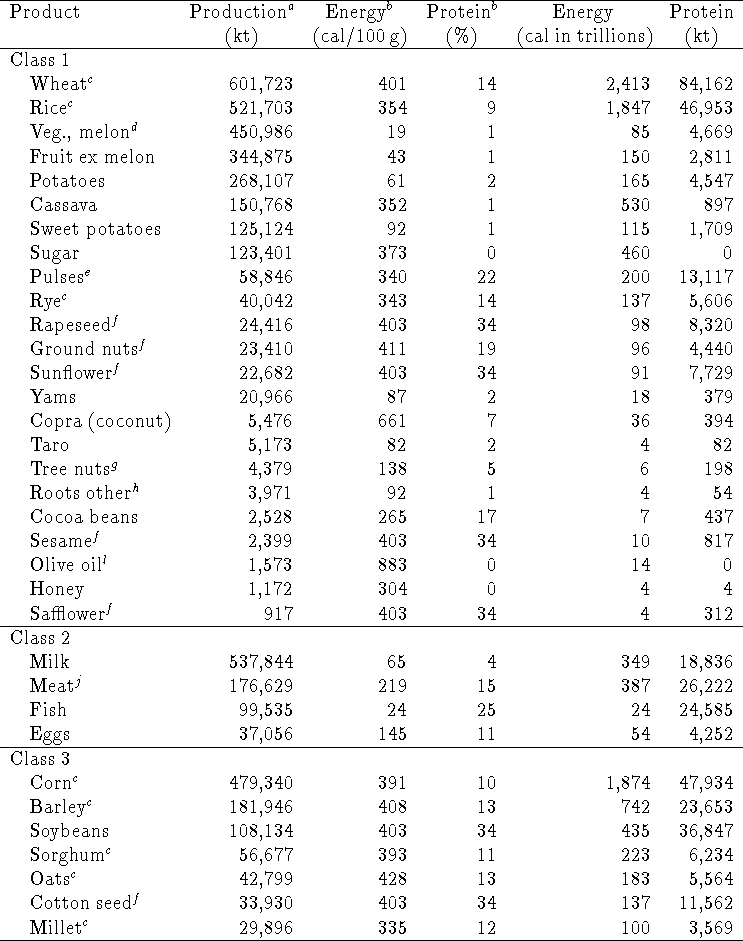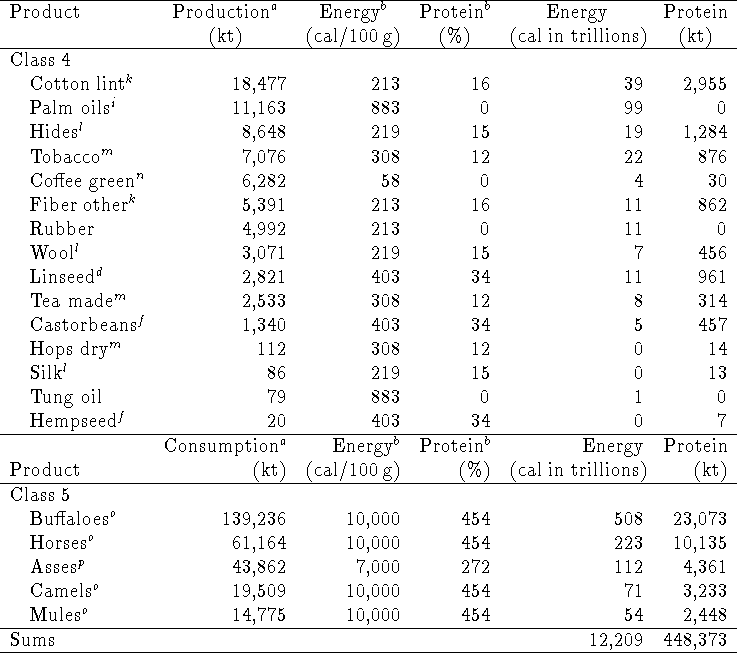
The following table translates the inventory of agricultural production published by the FAO into calories and protein. The products are presented in five classes. Crops such as wheat that generally are eaten by people comprise Class 1. Within the class the products are sorted from the most consumed, wheat, to the least. I show the quantity in thousands of metric tons. I show the energy or calories per 100 g and protein as percentage of the edible portion of food as purchased. In many cases, I estimate calories and protein; e.g., I used the composition of walnuts for tree nuts and of soybeans for safflower. The final columns are the trillions of calories and thousand metric tons of protein calculated from the preceding quantities and compositions.
Animal products milk, meat, and eggs make up Class 2.
Coarse or feed grains make up Class 3.
Other products not commonly eaten or fed make up Class 4.
Calories and protein consumed by draft animals make up Class 5.
Table A-1. Inventory of world agricultural production of calories and protein and consumption by draft animals, 1990


![]() Source: Food and Agriculture Organization of the United Nations,
1992.[FotUN]
Source: Food and Agriculture Organization of the United Nations,
1992.[FotUN]
![]() Watt and Merrill, 1963.[WM63] Exceptions are noted according
to footnotes below.
Watt and Merrill, 1963.[WM63] Exceptions are noted according
to footnotes below.
![]() Miller, 1958.[Mil58] Reprinted with permission courtesy
of the National Academy Press, Washington, D.C.
Miller, 1958.[Mil58] Reprinted with permission courtesy
of the National Academy Press, Washington, D.C.
![]() Cabbage.
Cabbage.
![]() Dry beans.
Dry beans.
![]() Soybean.
Soybean.
![]() Persian walnuts.
Persian walnuts.
![]() Sweet potato.
Sweet potato.
![]() Cooking oil.
Cooking oil.
![]() Beef.
Beef.
![]() Wheat bran.
Wheat bran.
![]() Beef.
Beef.
![]() Dried cabbage.
Dried cabbage.
![]() Olives.
Olives.
![]() Morrison, 1956. At medium work daily, 10,000 cal and
454 g protein for a 540 kg animal.
Morrison, 1956. At medium work daily, 10,000 cal and
454 g protein for a 540 kg animal.
![]() Morrison, 1956. At medium work daily, 7,000 cal and 272 g
protein for a 270 kg animal.
Morrison, 1956. At medium work daily, 7,000 cal and 272 g
protein for a 270 kg animal.